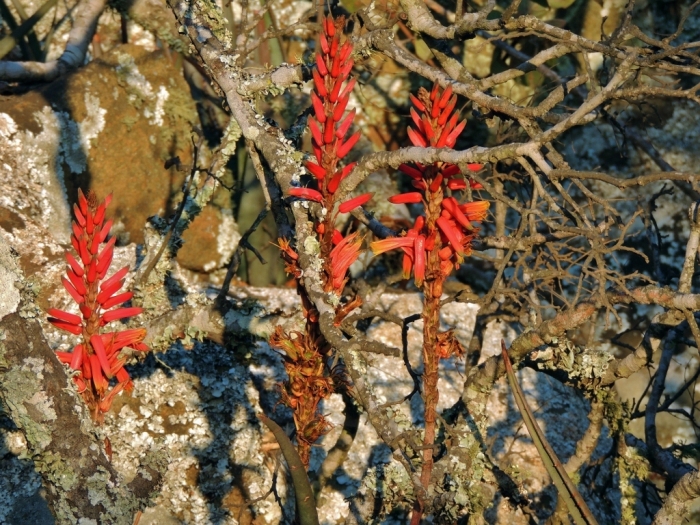Yellow Aloe
(Aloe cryptopoda)
Yellow Aloe (Aloe cryptopoda)
/
/

i_c_riddell
CC BY 4.0
Image By:
i_c_riddell
Recorded By:
Copyright:
CC BY 4.0
Copyright Notice:
Photo by: i_c_riddell | License Type: CC BY 4.0 | License URL: http://creativecommons.org/licenses/by/4.0/ | Rights Holder: i_c_riddell | Publisher: iNaturalist | Date Created: 2023-07-11T07:16:22-07:00 |



















Estimated Native Range
Summary
Aloe cryptopoda, commonly known as the Yellow Aloe, is a perennial succulent native to the arid and semi-arid regions of southeastern Africa, from southeastern Tanzania through Malawi, Zambia, and Zimbabwe to Botswana. It typically grows in dry, rocky habitats such as grasslands, bushveld, and on rocky outcrops. This species forms a rosette of thick, fleshy leaves that store water, enabling it to survive long periods of drought. Aloe cryptopoda reaches a height of up to 3 feet (1 meter) and a similar width. Its leaves are green to bluish-green and may have reddish-brown teeth along the margins.
The Yellow Aloe is notable for its striking inflorescences, which consist of tubular, yellow to orange-red flowers that bloom from late winter to spring, attracting pollinators such as bees and birds. The flowers are showy and make the plant a popular choice for xeriscaping and rock gardens. In cultivation, it requires minimal maintenance, thriving in well-drained soil and full sun to partial shade. It is tolerant of poor soils but does best in sandy or gravelly substrates. Overwatering should be avoided to prevent root rot. Aloe cryptopoda is not only valued for its ornamental qualities but also for its medicinal properties; the gel from its leaves is used in traditional medicine to soothe skin ailments. While generally pest-resistant, it can occasionally suffer from aloe rust or scale insects.CC BY-SA 4.0
The Yellow Aloe is notable for its striking inflorescences, which consist of tubular, yellow to orange-red flowers that bloom from late winter to spring, attracting pollinators such as bees and birds. The flowers are showy and make the plant a popular choice for xeriscaping and rock gardens. In cultivation, it requires minimal maintenance, thriving in well-drained soil and full sun to partial shade. It is tolerant of poor soils but does best in sandy or gravelly substrates. Overwatering should be avoided to prevent root rot. Aloe cryptopoda is not only valued for its ornamental qualities but also for its medicinal properties; the gel from its leaves is used in traditional medicine to soothe skin ailments. While generally pest-resistant, it can occasionally suffer from aloe rust or scale insects.CC BY-SA 4.0
Plant Description
- Plant Type: Succulent
- Height: 1.5-3 feet
- Width: 1-3 feet
- Growth Rate: Moderate
- Flower Color: Orange, Red
- Flowering Season: Winter
- Leaf Retention: Evergreen
Growth Requirements
- Sun: Full Sun, Part Shade
- Water: Low, Medium
- Drainage: Fast, Medium
Common Uses
Border Plant, Drought Tolerant, Fire Resistant, Low Maintenance, Rock Garden, Showy Flowers
Natural Habitat
Native to arid and semi-arid regions of southeastern Africa, including grasslands, bushveld, and rocky outcrops
Other Names
Common Names: Wolkberg Aloe, Spire Aloe, Yellow Aloe, Cryptopoda Aloe
Scientific Names: , Aloe cryptopoda, Aloe wickensii var. lutea, Aloe wickensii var. wickensii,
GBIF Accepted Name: